Somewhere Between Bend and Break
A wintry mix, a Sisyphean task, and the fragile integrity of dormant soil
We are currently enduring what the National Weather Service defines as a wintry mix– sleet, rain, snow, and freezing fog. Right now, the air temp is 33 Fahrenheit and its raining, fat, slow, viscous drops that freeze on impact with the icebound clay. The soil is too hard in some places for the rivulets of precipitation to be absorbed, and so they flow through the glassy thatch and pool in low-lying areas. The boughs and branches of leafless trees hang low with the burden of ice, each twig and limb glazed with a slick coating. The squirrels are unable to climb the burnished trunks, and instead scamper with care along the frozen rink of the forest floor, ambling cautiously, their cheeks full of frosty hedge-fruit. The chickadees, incongruously chubby and graceful, surf on the bending tips of hickory twigs with their bulbous winter buds encased in icy globes. Nuthatches do their best to stay dry and fluffed in the thinning cover of marcescent oak leaves, impossibly clinging to the underside of ice-smoothed bark. I am in awe of the grace and agility, especially having had nearly broken my ass trying to pee this morning, stepping onto the flowing, frozen puddle outside my door.
The wintry mix does not stick to cows, belching their grassy, frozen breath as they loaf in the depleted tall grass thatch, only days from their winter retirement in their barn. This morning, it was obvious that the cows were a bit annoyed, and that their paddock would become muddy and hoof-pocked once the ground thawed, so we brought them in, for the first time in many months. Our cows are spoiled, having more cover on pasture than most of the surrounding cattle here in Northeast Missouri. Pin oak and eastern red cedar in particular stand like living barns upon the icy savanna, providing wind block and some degree of cover during inclement weather, and a passive solar effect for sun-bathing on bright, cold days, the dark fronds of cedar and rusty limbs of oak absorbing heat throughout the shortened days.
No, our cows are fine in comparison with those huddled brown-black speckles of wet hide that dot the leeward side of muddy slopes, vaguely green with cool-season forage between the icy pasture-pies and deepening gullies of mire. When full dormancy kicks in, a disturbed area will become vulnerable to weathering and erosion for months, and so we bring everyone on in, even when there’s at least two or three more days of forage in the paddock. Hay is cheap, but good dirt ain’t. For all the good that livestock can potentially do for soils, they are also absolutely one of the worst things that can happen to soil, and it can all change in a matter of hours, with the arrival of wet weather.
With the frozen soil glazed over by slick ice, I do my own scampering, moving cautiously one boot at a time. I cannot afford to break my ass, and so, like the squirrels, I proceed with care, as if on foreign terrain. Before returning to the familiarity of my own shelter, I must scrounge some kindling from the woods. It’s wet, sure, but we can dry it in our wood-fired oven for the next fire, ad infinitum. We need only remain one step ahead on kindling, and I am afforded the opportunity to visit the old, cracked corpse of one of my favorite old trees, a storm damaged honey locust at the head of the draw to our north, which also happens to be an excellent spot to watch bird activity, and/or break my ass on the icy slope. I break a few wobbling old limbs on my knee into transportable pieces, and waddle back carefully, boot by boot like a penguin, as the nuthatches pirouette ‘round the crystallized branches of the splintered matriarch.
The world is brittle. Passing underneath the arching limbs of a wild old cherry tree that hang low with the weight of a wintry mix, some of the ice puddles crinkle as they crack underfoot, while others hold firm. Stumbling against prairie thatch, the glass armor held high on the seed heads of tall grass shatters and rains sharp on my face. The weak arms of silver maple creak and groan as they accumulate ice, and squirrels of the hedge slide awkwardly into the crusted duff of elm leaf. When the chickadees alight on the tree top tips, it looks like the branch may bend wrong, as if the whole fragile landscape might crumble and collapse. The kindling I shuffle home with is a reminder of the whole brittle dance, alive and outside, as every living thing seeks to armor itself from the meteorological onslaught.
This particular weather pattern, in which frigid temps are followed by an icy, rainy warm front, is something I associate more with late January and Early February than now. Each winter gets weirder- wetter, drier, colder, warmer, whatever. It isn’t the climate itself that troubles me, it’s the fragility of everything. The vulnerability and the brittleness and the inability to correctly anticipate with any precision. The nuthatches still whirl and spin on the icicled branches, because they can’t fall… they’re birds. But a human is liable to break their ass.
When the temperature rises and the melt-off begins, the once icy boughs sigh and shrug as their burden of ice is relieved. Squirrels cautiously return to the canopy, and whatever has not snapped off in the deluge once again becomes a ladder for the scolds of blue jays emerging from the deeper woods to congregate upon. The drip and thaw of warming slush burbles out along the hedgerow, sliding along the draws, seeping among the exposed roots of walnut and sycamore and old honey locust down in the bottomlands. Much of the silt and sediment which the storm has stirred up along the pasture’s broad shoulders has luckily been intercepted by the tangles of dormant thatch and brambles that armor the brittle prairie earth, and the water that flows all the way down to the creek is only mildly milky with soil as it enters the flow of muddier run-off from the barren banks upstream, the slow bleeding of our heartland.
Dormancy brings fragility to the earth, with little or no plant life utilizing the excessive moisture of winter, the topsoil here will remain vulnerable for months. Each and every human-perpetrated activity and management decision, from pasturing to tillage to tree felling has the potential to expose the precious gift of living dirt. We sacrifice small portions of land to spare our wider agricultural ecosystem the brunt of our disturbance, but even in these loafing yards and poultry lots, there are ways we can better armor and nourish this complex, living skin capable of feeding us and absorbing (some of) our emissions.
Our winter poultry yard is about ¾ of an acre. It supports 75-80 birds in the winter. Due to various geographical and zoning limitations, it is located above the keyline of a westerly slope which is quite exposed, and hence sensitive. We have managed to maintain and establish groups of savanna-like outcroppings throughout this winter paddock: tight, contoured rows of mulberry and elder and wild plum that can filter and absorb the excess fertility, sheltering islands of Eastern red cedar to calm the wind and snow, spreading forms of black walnut, and thickets of hybrid hazelnuts and American persimmon to offer both cover from hawks and perennial nourishment. In between these firmly rooted, earth-holding trees we have begun planting and propagating Eastern gama, a native, warm-season bunching tall-grass that holds back the rain and snowmelt and retains organic matter that would otherwise be lost to the Gulf of Mexico over time. The dormant grass clumps are each a foot or two around, and they texture the slope as functional silt traps. They have been expanding slowly, and the soil where we’ve managed to establish them thus far remain much less muddy than those areas we haven’t planted yet.
In the pig sty, the poultry yard, and the dairy barn, there are inevitably areas of mud– small oceans of it at times. We do our best to inundate the muck with carbon: straw and waste hay, woodchips, sawdust, and biochar from our little kiln. Gradually, through trampling and scratching, this material is worked deep in the rich mud, and gradually breaks down into a rich, balanced amendment for the gardens and orchards further up-slope. It isn’t always a pretty sight by late February, and the work of reallocating carbon to these areas can be a bit Sisyphisean, but it seems to work at our scale, for now.
A fat, nervous squirrel rolls a soggy, slushy hedgeball to the base of the big Osage orange, in view of where I write. She pushes it partway up the trunk, and then grasps it in her jaws– the fruit, by my estimate, is about the same size as she is, and specially shaped to roll down a tree. The is bringing it up to a stable crotch in the canopy, where she can safely perch and tear her way through the frozen pith to reach the tempting seeds, out of reach of our very curious and squirrel-averse dog. With the awkward ball dangling from her locked maws, she steadily traverses the spiny tendrils of the tree, the twisted grain of the wood trembling as the weight shifts further out on the limb. One foot forward, and then another, she tests the tension in twigs, and tip-toes back and forth from twig to limb, finding the safest ascent to the feeding roost. The higher she climbs, the greater the stakes. I have seen a few tumbling squirrels in my day, but never to the point of fatality. It must take some intuition or innate knowledge of trees to scale them so carefully, when the fulcrum point between bend and break cannot necessarily be identified by passive observation.
The cows are bored and bellowing in their loafing yard. They can smell the last bit of living grass, and prefer it to hay. Their water trough is still out in the pasture, so we can only fill a smaller container for them until the move back home is complete, and this must be done often, as the hay brings thirst. I stomp down lightly on the sodden earth, and contemplate setting them back out for the next few days. In a decade of farming, I have begun to understand better where the branch might bend or break, in terms of soil integrity.
They say intuition isn’t actually some psychic power that some of us have, but just the retained, subconscious memory from having been in a situation often enough. This may hold true for going out on a literal limb, or determining the trustworthiness of another human being. Squirrels tumble now and then, and eventually, they learn to be agile, and can make the determination between bend and break. But humans have never been through a climate event like the one we’re now entering, and that’s what I think of most, watching the squirrels winding up the maze of bark and thorn. I somehow have the feeling it won’t be a graceful tumble, that collectively, we could break our ass, so to speak. So one boot in front of the next, please do step with care.


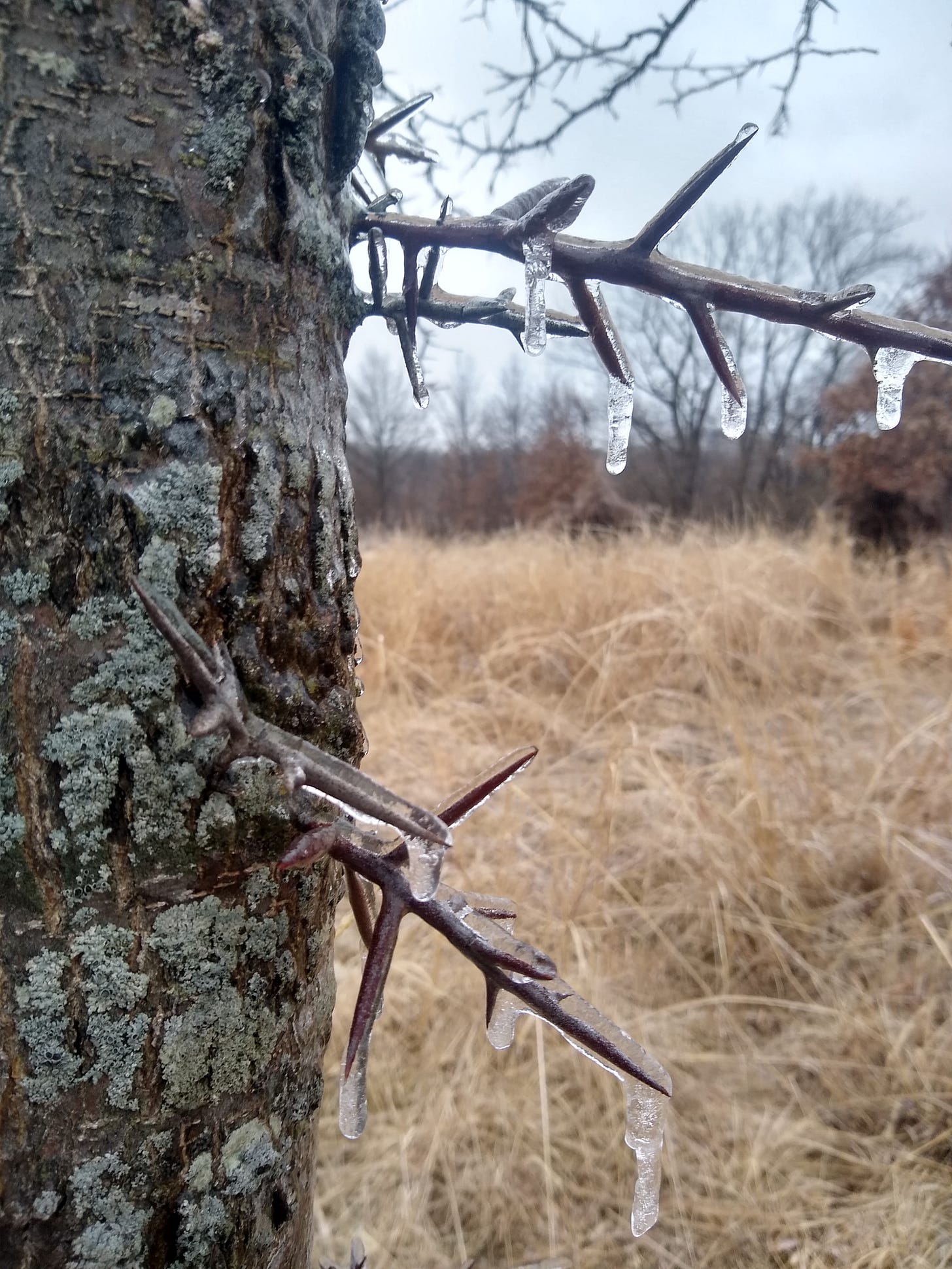
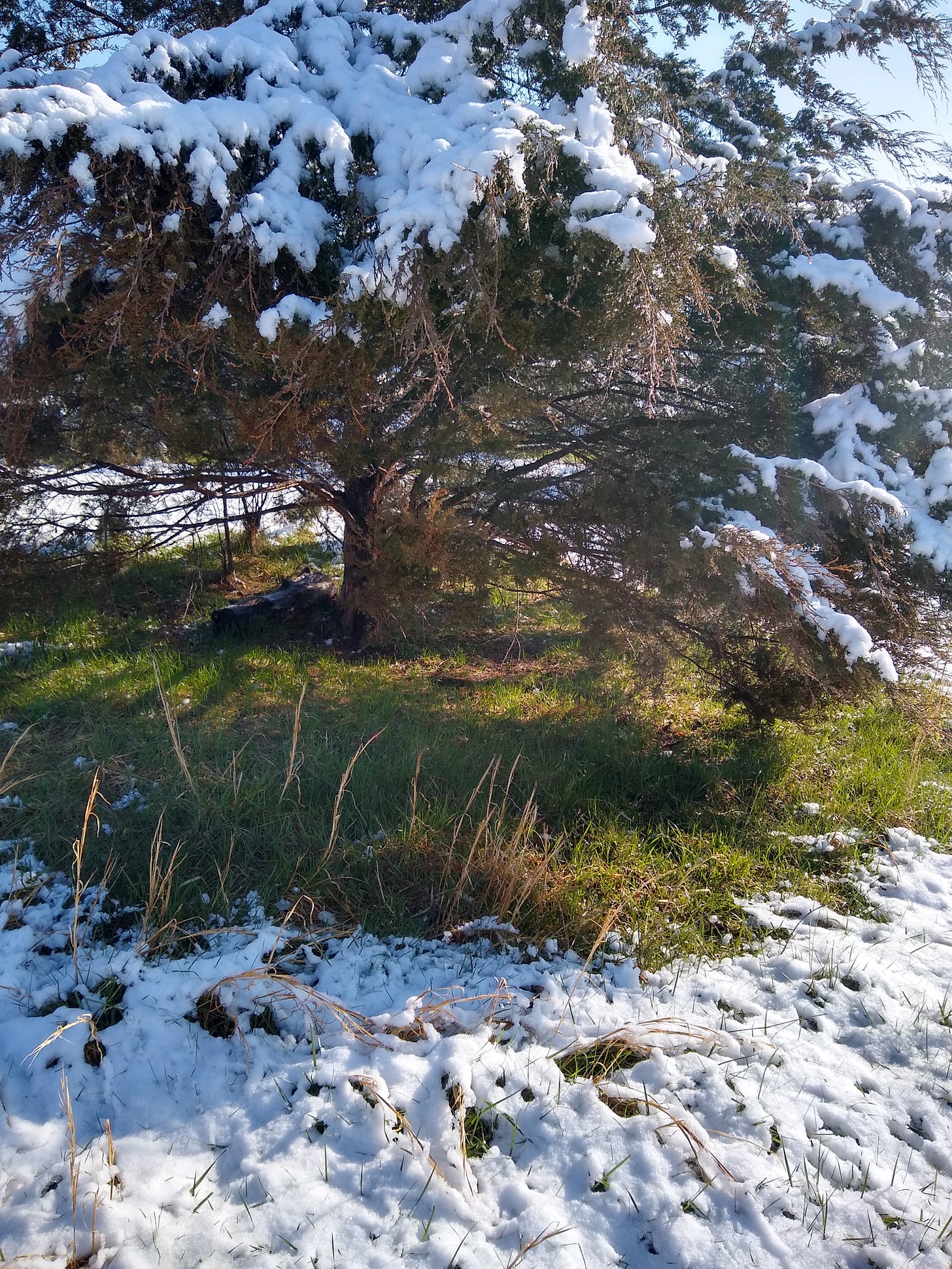
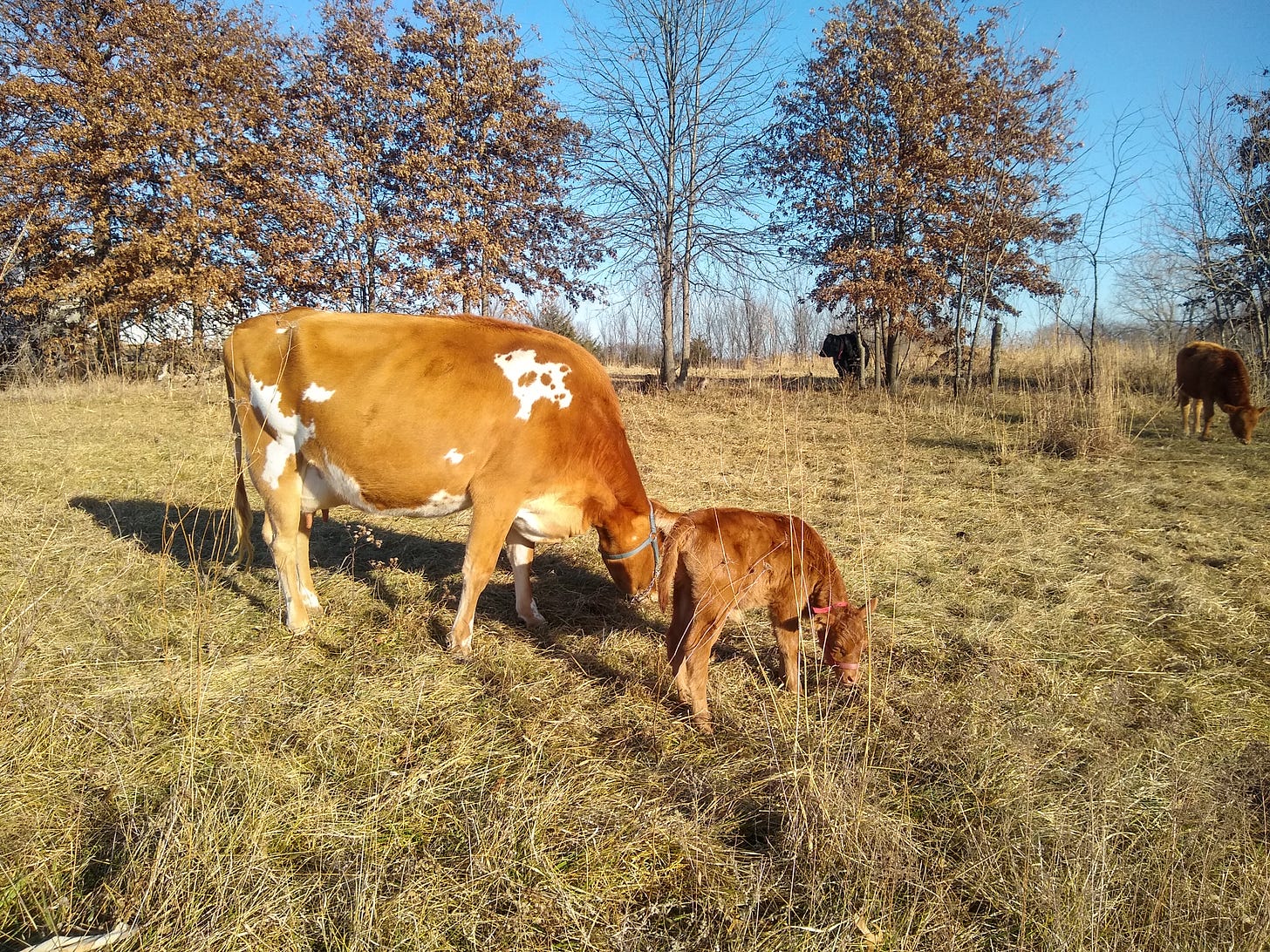
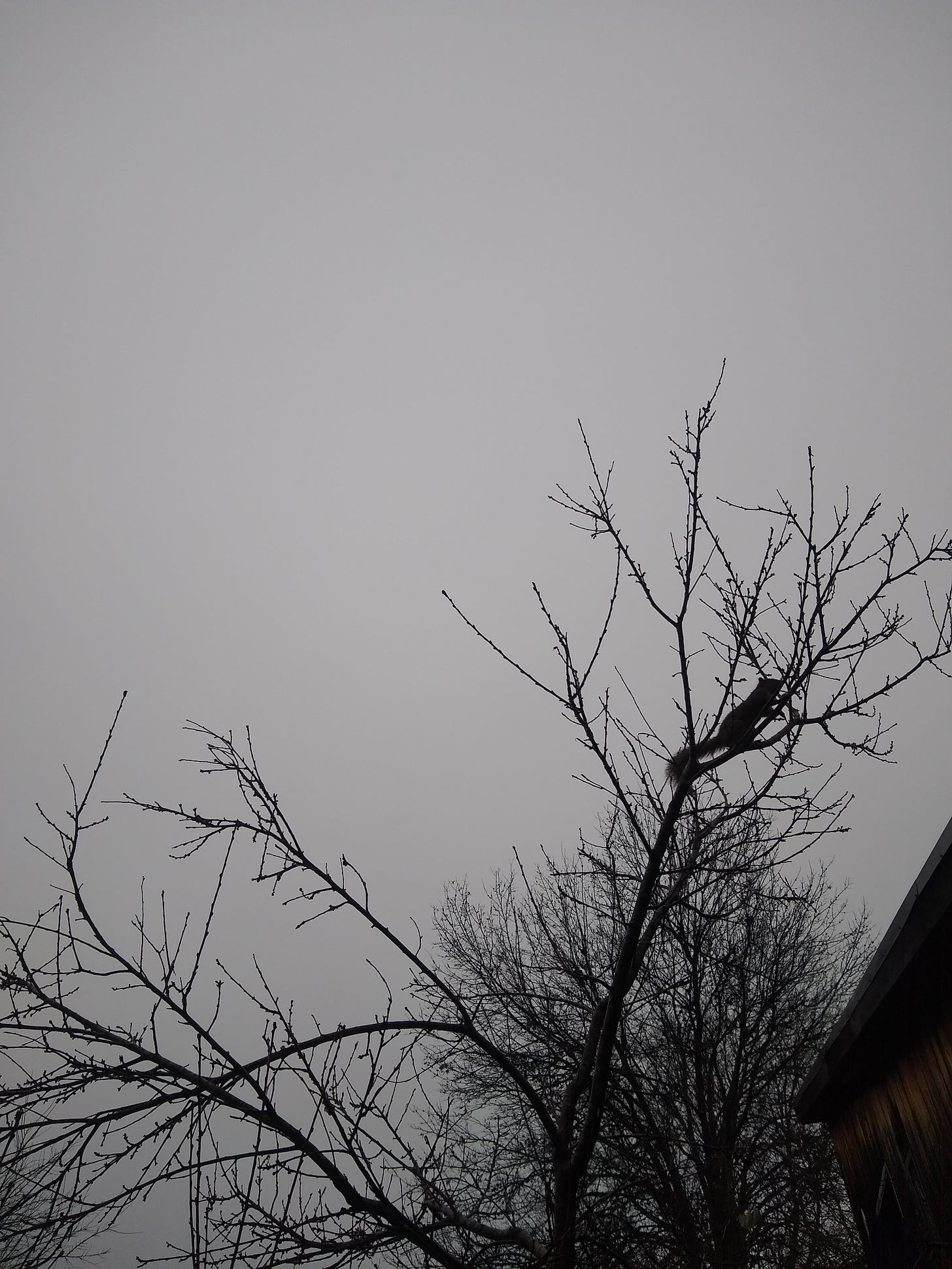
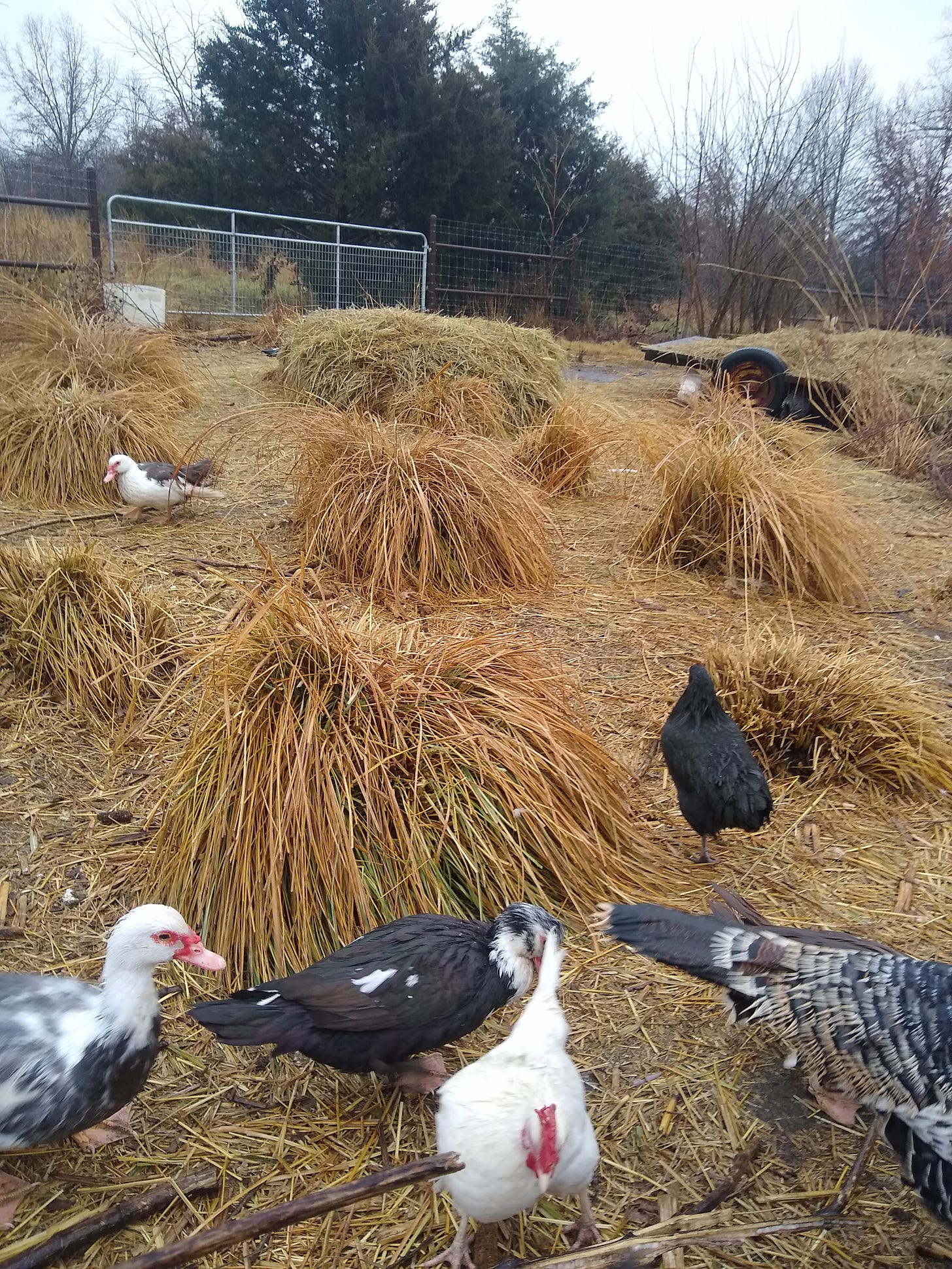
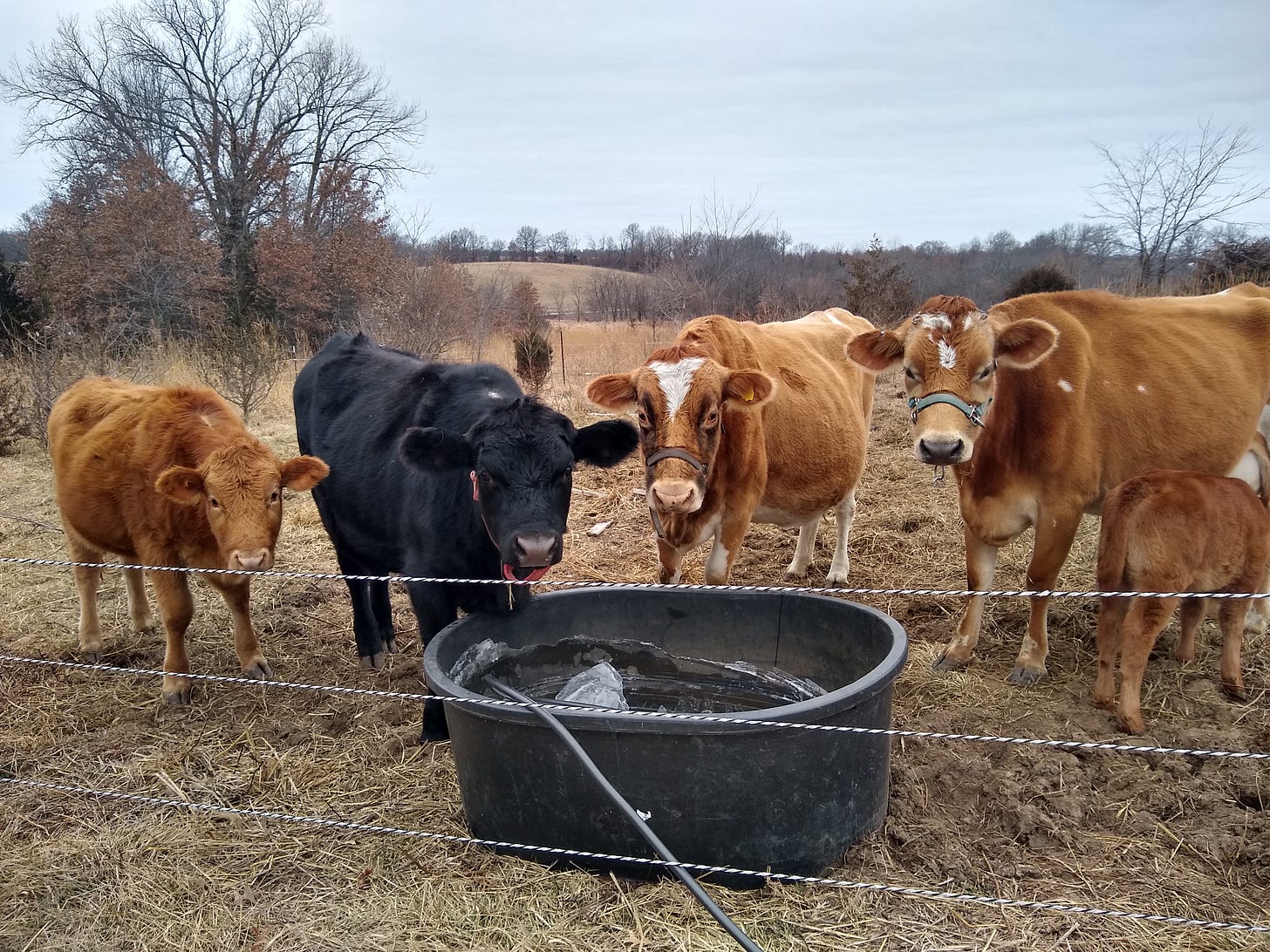
Thanks for these glimmers into your soulful work. Hearing of the care you take with your land and animals makes me worry for those not so lucky. Thanks for showing how it can be done.